calsfoundation@cals.org
U.S. Highway 62
aka: Highway 62
U.S. Highway 62 crosses the northern counties of Arkansas. It passes through eleven counties, from Washington County in the west to Clay County in the east. Some portions of Highway 62 were proposed by William Hope “Coin” Harvey, who wanted to facilitate automobile traffic to his tourist destination, Monte Ne (Benton County).
Route
U.S. Highway 62 begins in El Paso, Texas, and runs through ten states to Niagara Falls, New York. It is the only east-west highway in the United States that connects Mexico to Canada. The entire length of the highway is 2,245 miles, of which 329.9 miles cross the state of Arkansas.
U.S. Highway 62 enters Arkansas from Oklahoma as a two-lane highway. It runs through Summers (Washington County), Lincoln (Washington County), Prairie Grove (Washington County), and Farmington (Washington County) before joining Interstate 49 in Fayetteville (Washington County). Highway 62 leaves the interstate in Bentonville (Benton County), becoming Southeast 14th Street by the campus of Northwest Arkansas Community College. From there, it travels through Rogers (Benton County) and extends northeast through Avoca (Benton County), past the Pea Ridge National Military Park, and through Garfield (Benton County).
From Garfield, Highway 62 travels to Gateway (Benton County) and then leads southeast to Eureka Springs (Carroll County), where it becomes Van Buren Street. From there, it winds through the hills to Berryville (Carroll County), and then to Green Forest (Carroll County) and Alpena (Boone and Carroll counties). In Alpena, it joins with U.S. Highway 412 and runs as a four-lane divided highway to Harrison (Boone County); before reaching Harrison, the two highways join with U.S. Highway 65 in Bear Creek Springs (Boone County). The triply-numbered highway crosses Harrison and continues through Bellefonte (Boone County) before Highways 62 and 412 split away from Highway 65 and become a two-lane highway leading to Pyatt (Marion County).
From Pyatt, the combined highway proceeds through Yellville (Marion County), then bypasses Flippin (Marion County) to the south. It crosses the White River at Cotter (Baxter County) and proceeds through Gassville (Baxter County). The combined highway skirts the southern edge of Mountain Home (Baxter County) and continues eastward, crossing Norfork Lake between the Panther Bay Public Use Area and the Henderson Park Use Area. From there, Highway 62/412 enters Fulton County and passes through Viola (Fulton County) and Salem (Fulton County). Next, it bears south into Ash Flat (Sharp County), where it encounters the northern terminus of U.S. Highway 167. Highway 62/412 then travels through Cherokee Village (Sharp and Fulton counties) and Highland (Sharp County). The combined highway meets U.S. Highway 63 in Hardy (Sharp County); the highways combine and move roughly parallel to the Spring River north of Williford (Sharp County), through Ravenden (Lawrence County) and into Imboden (Lawrence County).
In Imboden, Highway 62 departs from Highways 63 and 412 and leads eastward to Pocahontas (Randolph County). In Pocahontas, Highway 62 joins Highway 67, and the two highways continue northeast to Corning (Clay County). In Corning, they divide, with Highway 62 proceeding east through McDougal (Clay County), Pollard (Clay County), and Piggott (Clay County). After Piggott, Highway 62 turns north and crosses the St. Francis River at St. Francis (Clay County), where it enters the bootheel of Missouri.
History
Many local portions of U.S. Highway 62 were built in the nineteenth century, but the first effort to create a major thoroughfare connecting these roads was proposed early in the twentieth century. In 1913, Coin Harvey organized the Ozark Trails Association (OTA) to bring tourists by road to Monte Ne, a resort he had built in Benton County. Monte Ne and Rogers were intended to be major stops on the highway system, which would also reach points in Missouri, Kansas, and Oklahoma. Eureka Springs also benefited from the proposed highways, but the project developed mostly north of Arkansas, eventually including Colorado, Kansas, New Mexico, and Texas. U.S. Highway 66 is a result of the OTA.
The same year Harvey organized the OTA, the Arkansas General Assembly created Arkansas’s first highway commission. During the 1920s, the commission worked to improve Arkansas’s roads, including parts of the Ozark Trail that were being neglected by the OTA. In 1930, the U.S. Congress commissioned a highway, intended at first to run from Carlsbad, New Mexico, to Maysville, Kentucky. Two years later, the commissioning was extended to link El Paso, Texas, to Niagara Falls, New York.
During the 1930s, the intention of the national highway system was to link cities and towns. By the 1960s, with the growth of the interstate highways, travelers began wanting to save time, and byways were built around some cities. Business Highway 62 preserves the original routes through Prairie Grove, Pyatt, Cotter, Mountain Home, and Salem. In Carroll County, a bypassed segment of the old Highway 62 called the Busch Segment was listed on the National Register of Historic Places on September 25, 2008.
As Harvey hoped, the highway has been a major boon to tourism in Arkansas. Not only does it draw tourists to historic sites and natural wonders, it has also supported construction throughout the years of gas stations, tourist courts, restaurants, and motels.
For additional information:
Historical Review. Vol. 2: Arkansas State Highway Commission and Arkansas State Highway and Transportation Department, 1913–2003. Little Rock: Arkansas State Highway and Transportation Department, 2004.
Kennan, Clara B. “The Ozark Trails and Arkansas’s Pathfinder, Coin Harvey.” Arkansas Historical Quarterly 7 (Winter 1948): 299–316.
“Old U.S. 62, Busch Segment.” National Register of Historic Places registration form. On file at Arkansas Historic Preservation Program, Little Rock, Arkansas. Online at http://www.arkansaspreservation.com/National-Register-Listings/PDF/CR2059.nr.pdf (accessed July 26, 2017).
Steven Teske
Butler Center for Arkansas Studies
 Transportation
Transportation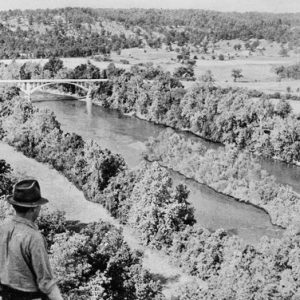 Before Norfork Lake
Before Norfork Lake 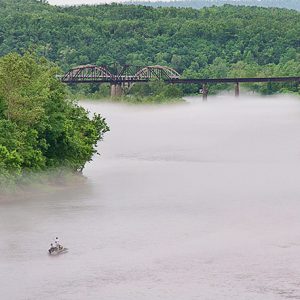 Cotter Bridge
Cotter Bridge 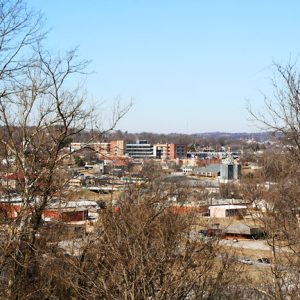 Harrison
Harrison 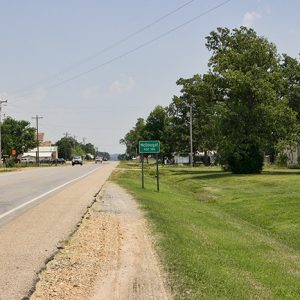 McDougal Street Scene
McDougal Street Scene 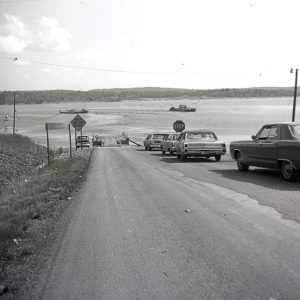 Norfork Lake Ferry
Norfork Lake Ferry  Norfork Lake Ferry Crossing
Norfork Lake Ferry Crossing  St. Francis River
St. Francis River 




Comments
No comments on this entry yet.